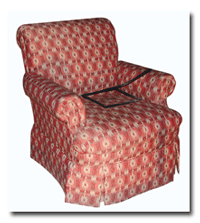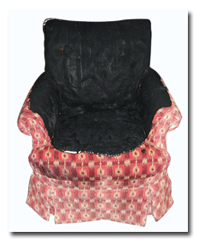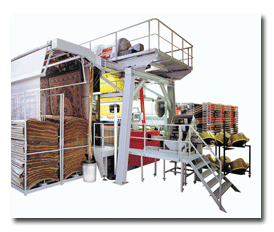The American Textile Manufacturers Institute (ATMI) has issued its wish list dealing with
international trade issues, which in effect challenges Congress and the administration to live up
to their commitments to safeguard the interests of the US textile industry. The institute’s
“Textile Action Plan for Growth” lists eight areas where ATMI is seeking government support in
order to “revitalize” an industry that continues to be plagued by foreign competition.
The Bush Administration has announced plans to negotiate a series of free trade pacts and is
heavily engaged in tariff-cutting proposals in connection with the Doha Round of international
trade negotiations expected to be concluded by 2005.
The major elements of the ATMI Textile Action Plan for Growth are:
1. Doha Round: The U.S. Government must address in the World Trade Organizations Doha
Round negotiations the barriers that currently exist in textile and apparel
trade. Specifically, the U.S. should insist that all countries must immediately eliminate
their non-tariff barriers to textile and apparel imports. The U.S. should further insist that
the high textile and apparel tariffs imposed by many major exporting nations be reduced to U.S.
levels in order to provide real access into those markets. Only after these objectives are
achieved should countries negotiate any further reductions in textile and apparel tariffs. Finally,
the U.S. should insist that other countries agree to fully protect textile and apparel intellectual
property through comprehensive and effective intellectual property laws and regulations designed to
protect copyrights, designs and patterns.
2.Sound Dollar Policy: The U.S. Government must adopt a Sound Dollar policy, allowing
the overvalued U.S. dollar to return to more natural and historic levels, and take immediate and
strong action against countries such as China, Korea and Taiwan that intentionally manipulate their
currencies in order to gain a competitive advantage vis-is the United States. A recent study
by the Manufacturers Alliance concluded that Chinas currency was 40 percent undervalued.
3.No Non-Reciprocal Trade Expansion: The U.S. Government must continue to reject demands of
developing countries to change the terms of existing agreements and programs to further increase
their access to the U.S. market at the expense of U.S. textile producers. The U.S. must also
reject attempts at unilateral trade liberalization such as the expansion of Qualified Industrial
Zones (QIZs) to include textile and apparel production.
4.China Textile Safeguard: The U.S. Government must immediately institute quotas on certain
categories of U.S. imports from China in response to the massive surges of such products from China
since those products were integrated into the WTO on January 1, 2002. The textile safeguard
provision of the China WTO accession agreement was specifically designed to make sure that the U.S.
could take such action in response to import surges, and ATMI requested the Bush Administration to
make use of this provision over three months ago.
5. FTA’s Rules of Origin, Customs Enforcement, Intellectual Property Protection: The
U.S. Government must ensure that all Free Trade Agreements (FTAs): a) are based on a
strong, enforceable yarn-forward rule of origin, without unwarranted exceptions through tariff
preference levels (TPLs); b) contain effective Customs enforcement provisions, including a
kick-out clause for countries that do not enforce the textile rules; and c) fully protect U.S.
textile and apparel intellectual property through comprehensive and effective intellectual property
laws and regulations designed to protect U.S. copyrights, designs and patterns.
6. Vietnam Textile Agreement: The U.S. Government must quickly negotiate a textile agreement
with Vietnam imposing quotas on textile and apparel imports from that country. Such imports
have soared since Vietnam was granted Normal Trade Relations (formerly known as Most Favored
Nation) status and are currently increasing at a rate of 50 million square meters a month.
7. Industry Not a Bargaining Chip: The U.S. Government must avoid using the American textile
industry as a bargaining chip in the war on terrorism, including keeping its commitment to the
industry not to accelerate or change the WTO textile quota phase-out for any nation or granting
additional duty-free benefits for any nation. The cost of this campaign must be equally borne
by all Americans, without singling out American textile manufacturers and their workers for trade
concessions. Indeed, as the American textile industry is a critical supplier to the U.S.
military, its continued viability is essential to our homeland security and must not be sacrificed
or ignored.
8. Effective Customs Enforcement: The U.S. Government should provide for strong and effective
Customs enforcement of all textile and apparel trade. This should include, but not be limited
to: a) Full Customs Funding — The U.S. Government must provide full funding for the U.S.
Customs Service enforcement personnel and programs authorized by the Trade Act of 2002. These
provisions will be meaningless unless the actual funding is provided for them through the
appropriations process, and maintained each year by Congress. b) Prevention of
In-Bond Smuggling — The government must crack down on the massive smuggling of Asian textile
products using the in-bond system to gain duty-free access to the U.S. market. Recently, the
government revealed that it was investigating a single instance of smuggling that involved 5,000
containers of textile goods from Asia worth $500 million through the port of Los Angeles/Long
Beach. This and other instances must be fully investigated and prosecuted. c) Development of
Customs Tracer Technology — The U.S. Government must continue to swiftly and fully explore how to
develop so-called tracer technology that will allow the Customs Service to ensure that imported
goods claiming to be made of U.S. fabric and yarn do indeed contain U.S. components. This
will require continued support and funding for such research, which is currently being conducted by
various offices within the Departments of Commerce, Energy and Agriculture, with support from the
Customs Service itself.d) Provisions to Protect Intellectual Property — The U.S.
Government must support efforts to ensure that the Customs Service is able to fully protect U.S.
textile and apparel intellectual property through comprehensive and effective intellectual property
laws and regulations designed to protect U.S. copyrights, designs and patterns.
January 2003







